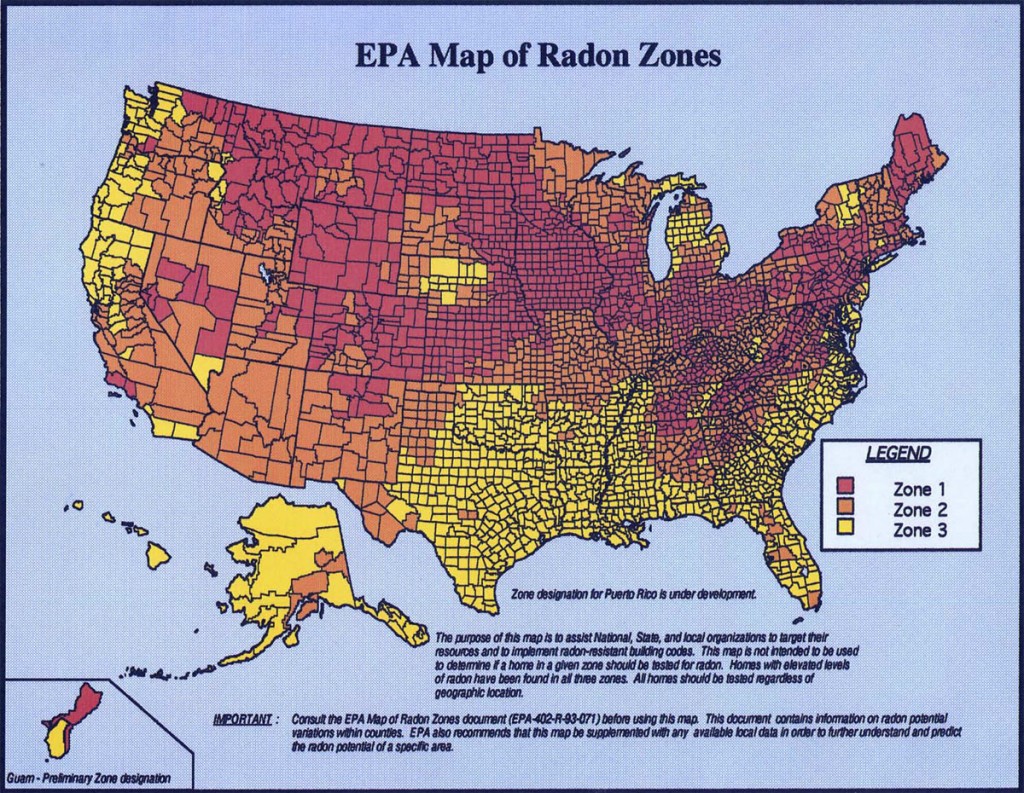What is Radon?
Radon is a cancer-causing natural radioactive gas that you can’t see, smell or taste. Its presence in your home can pose a danger to your family’s health. Radon is the leading cause of lung cancer among non-smokers. Radon is the second leading cause of lung cancer in America and claims about 20,000 lives annually. The areas affected across the United states are shown here on this map:
– Zone 1 counties have a predicted average indoor radon screening level greater than 4 pCi/L (pico curies per liter) (red zones)
– Zone 2 counties have a predicted average indoor radon screening level between 2 and 4 pCi/L (orange zones)
– Zone 3 counties have a predicted average indoor radon screening level less than 2 pCi/L (yellow zones)
Consulting this map is only for broad reference. In order to determine the level of Radon in you home the most effective method available to the public is a liquid scintillation or other radon test kit:
http://www.hvacquick.com/products/residential/Fans/Radon-Fans/RadonAway-Radon-Test-Kits
This test is a simple first step towards peace of mind in protecting your family and yourself from the deleterious effects of Radon.


